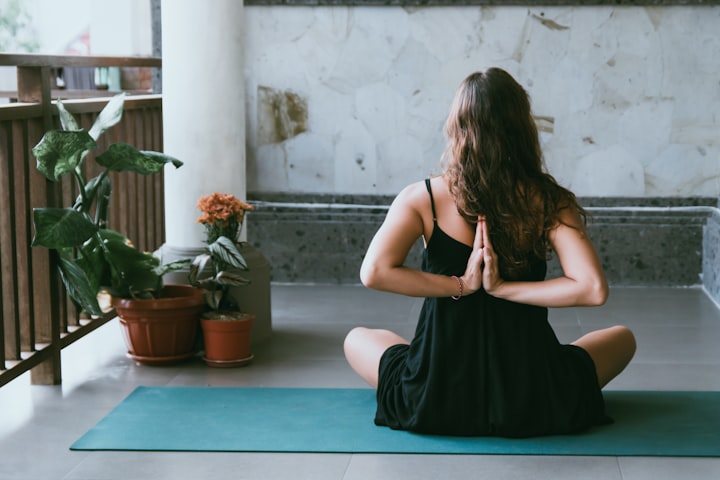
Hunchback posture, also known as kyphosis, is a common condition characterized by a rounded upper back and shoulders that are excessively forward. It can be caused by factors such as poor posture, weak back muscles, sedentary lifestyle, or even certain medical conditions. Fortunately, yoga offers a range of effective poses that can help correct hunchback posture and promote better spinal alignment. In this article, we will explore some beneficial yoga poses specifically designed to strengthen the back muscles, improve posture, and alleviate the symptoms of hunchback posture.
Mountain Pose (Tadasana):
Begin by standing tall with your feet hip-width apart. Relax your shoulders and lengthen your spine. Engage your core muscles and distribute your weight evenly on both feet. Lift the chest, roll the shoulders back, and extend the crown of your head towards the ceiling. Hold this pose for several breaths, focusing on elongating the spine and maintaining proper alignment.
Cat-Cow Pose (Marjaryasana-Bitilasana):
Start on all fours with your wrists directly below your shoulders and your knees under your hips. Inhale as you arch your back, lift your tailbone, and gaze up towards the ceiling (Cow Pose). Exhale as you round your spine, tuck your tailbone, and draw your chin towards your chest (Cat Pose). Flow between these two poses, synchronizing your movements with your breath. This sequence helps to mobilize and strengthen the spine, promoting flexibility and better posture.
Cobra Pose (Bhujangasana):
Lie on your stomach with your palms placed beside your shoulders. Keep your legs extended and the tops of your feet pressing into the mat. Inhale and lift your chest off the floor, using your back muscles. Keep your shoulders relaxed, elbows slightly bent, and gaze forward. Hold the pose for a few breaths, gradually increasing the lift of your chest. Cobra pose strengthens the back muscles, opens the chest, and improves posture.
Locust Pose (Salabhasana):
Lie on your stomach with your arms by your sides, palms facing up. Inhale and lift your chest, head, arms, and legs off the mat simultaneously. Keep your gaze forward and maintain a strong, engaged core. Hold the pose for a few breaths and then release. Locust pose targets the muscles in the back, helps correct hunchback posture, and enhances spinal strength and flexibility.
Bridge Pose (Setu Bandhasana):
Lie on your back with your knees bent and feet flat on the mat, hip-width apart. Place your arms alongside your body, palms facing down. Press your feet into the ground, engage your glutes, and lift your hips off the mat. Roll your shoulders back and interlace your fingers beneath your pelvis, pressing your arms into the mat for support. Hold the pose for a few breaths, focusing on elongating the spine and opening the chest. Bridge pose strengthens the back muscles, stretches the chest and shoulders, and promotes better posture.
Child's Pose (Balasana):
Kneel on the mat with your knees hip-width apart and your toes touching. Sit back on your heels and slowly lower your torso towards the ground, extending your arms in front of you. Allow your forehead to rest on the mat and relax your entire body. Breathe deeply into your back, feeling a gentle stretch along the spine. Child's pose helps release tension in the back muscles, promotes relaxation, and gently stretches the spine, promoting better posture.
Downward Facing Dog (Adho Mukha Svanasana):
Start on all fours with your hands shoulder-width apart and your knees hip-width apart. Curl your toes under, press through your hands, and lift your hips up towards the ceiling, straightening your legs as much as possible. Lengthen your spine, keep your heels pressing towards the ground, and relax your head and neck. Engage your core and breathe deeply into your back. Downward Facing Dog pose strengthens the back muscles, stretches the entire spine, opens the chest and shoulders, and helps improve overall posture.
Conclusion:
Incorporating these additional two yoga poses, Child's Pose and Downward Facing Dog, along with the previously mentioned poses, can further aid in correcting hunchback posture. Remember to maintain a consistent yoga practice, focusing on proper alignment, breathing, and gradual progression. It is advisable to consult with a qualified yoga instructor or healthcare professional before starting any new exercise regimen, especially if you have any pre-existing medical conditions. With dedication and regular practice, these yoga poses can help you achieve better posture and a healthier, more aligned spine.
Click here to get high-quality yoga apparel in Yoga Sale Outlet
About the Creator
BettyAd
Yoga & Pilates






Comments
There are no comments for this story
Be the first to respond and start the conversation.